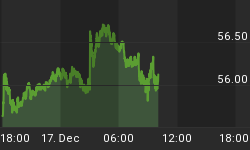If it escaped your notice, there is the small matter of British citizens voting on whether to leave or remain within the European Union on the 23rd June. Being a British citizen (or is that a British subject), I have a vote to cast which requires some thought. However, one other thought is the effect a "Brexit" would have on silver as measured in Pounds Sterling.
Now, Britain does have its fair share of silver investors, who will see silver as an investment opportunity, or perhaps a bulwark against a currency that is subject to the same predations as any other fiat currency. The silver story in British Pounds is pretty much the same as the one for US Dollars as the monthly chart (courtesy of netdania.com) shows.

From a low of about £2.70 per troy ounce in 2003, silver peaked at £30.14 in April 2011. That is an 11.2 fold increase compared to an 11.6 fold increase for silver priced in US Dollars over the same term. If the silver bull of 2003-2011 was just about the dollar, the pound shows it was actually more about fiat money versus real money in general.
But is the Brexit threat feeding its way into the British market for silver? A look at the daily chart since December 2015 shows that, once again, British silver is enjoying the same bull run as its American counterpart.

The percentage increases are similar, but a closer analysis shows that Brexit may be having its effect. For this, we call up a weekly chart which shows the British price of silver relative to the US price and the Dollar/Pound exchange rate since October 2013. So, the percentage scale to the right tells us where each instrument is relative to that starting date. As you can see, they are all down relative to that date.

So the top blue line is the relative Pound/Dollar exchange rate, the black line is the relative price of silver in Pounds and the bottom green line is the relative price of silver in Dollars. The first thing to notice is how silver in dollars is generally outperforming silver in pounds until about November 2014 after which the black line of silver in pounds goes above the green dollar line and stays that way.
Secondly, note the gap between the two silver lines widens into this year as the pound begins to devalue against silver such that the current gap between silver in £s and silver in $s is now 5.99%. While this was going on, the drop in the $/£ exchange rate over the same time was 6.59% for a small 0.6% difference.
In other words, British holders of silver are seeing their investment act as a wealth preserver against pound devaluation. I would say that this is exactly what one would expect to see from silver. The question is now whether a vote to leave the European Union will see silver in pounds race to new highs and transform British silver from wealth preservation to wealth appreciation? If the British vote to leave the EU on Thursday, we'll see if this unfolds into next week.
Further analysis of silver can be had by going to our silver blog at http://silveranalyst.blogspot.com where readers can obtain subscription details for the Silver Analyst newsletter. A free sample copy can be obtained by emailing silveranalysis@yahoo.co.uk.















